Indoor walking workouts can help you keep fit in just 22 minutes a day - here's how
Indoor walking workouts are a time efficient and easy way to keep fit in the colder months. Here, two personal trainers explain how to do them and the benefits
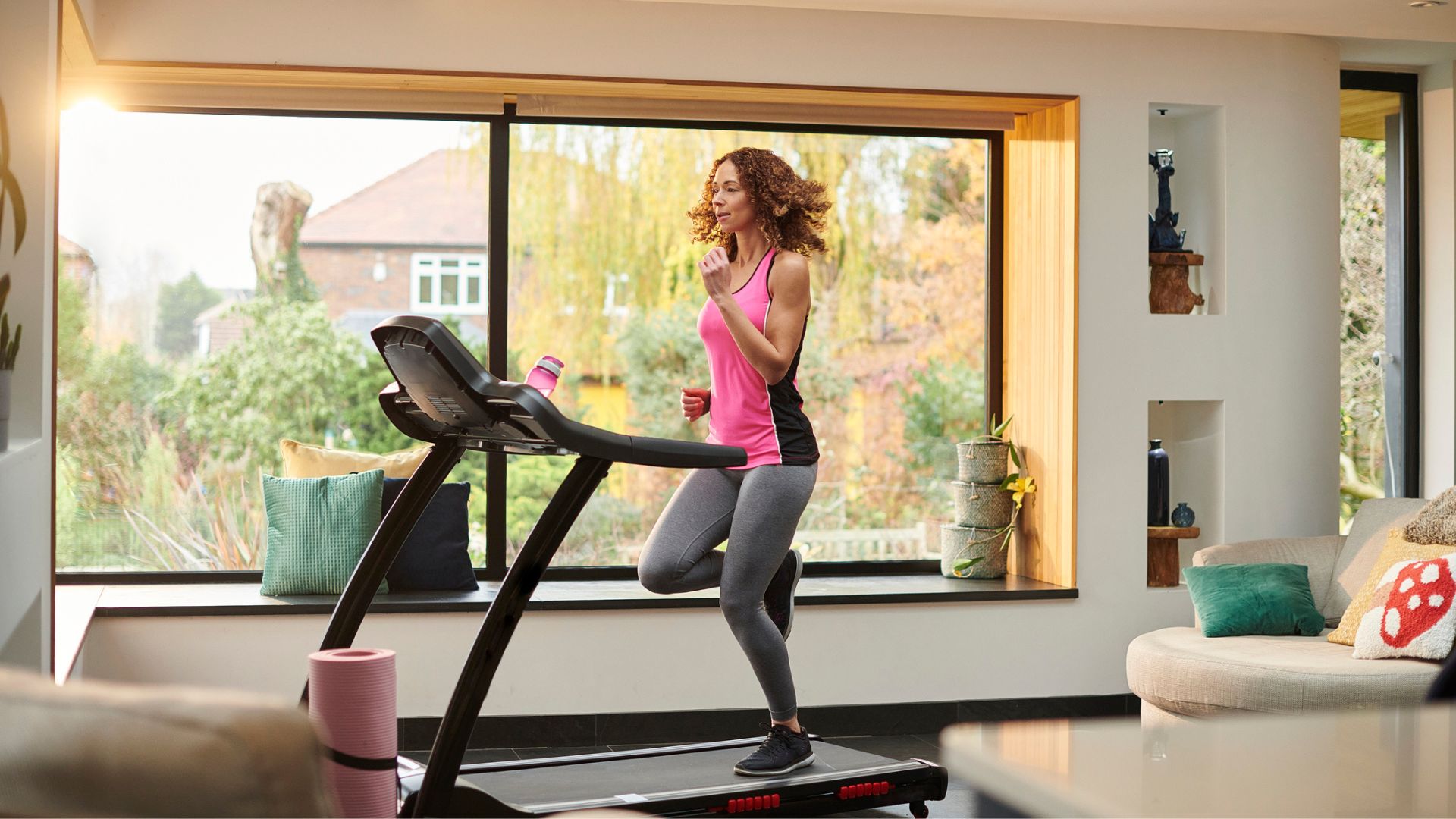

With autumn officially here, indoor walking workouts are having their time in the sun. Growing in popularity in recent months on social media, these workouts are the perfect way to get your steps in, boost your fitness, and help weight loss in the comfort of your own home.
What's more, you don't have to do it for hours to reap the benefits. Walking for 30 minutes a day or less will do the trick. Susan Griffin, a health writer and avid hiker who turned from walking pad-sceptic-to-fan says: "The biggest appeal is that you don't have to leave the house to get your steps in. I've done an indoor walking workout before breakfast, while waiting for a delivery, watching television, and speaking to friends and family on the phone. I even took the opportunity waiting for the kettle to boil to get some steps in."
Looking to try indoor walking workouts for yourself? Here, three personal trainers and women's health specialists weigh in on their benefits - and the workouts to try for yourself.
What are indoor walking workouts?
Indoor walking workouts are sessions designed to replicate an outdoor walk or a treadmill walk in your home. They are typically done on a walking pad or small treadmill, are low-impact, high-energy, and can be done anytime.
The idea might sound counterintuitive - surely the whole point of walking is to get outside for some fresh air? While fresh air and exposure to green spaces are just two benefits of walking, changeable weather and busy schedules can sometimes make it hard to get outside. That's where indoor walking workouts come in.
"It's a sustainable exercise choice, gentle on the joints, and adaptable to any environment," says Rachael Sacerdoti, a personal trainer and the founder of It's So Simple. "Foster consistency to ensure you commit long-term to this exercise and meet any goals you might have, weight loss or otherwise."
Where to buy a walking treadmill
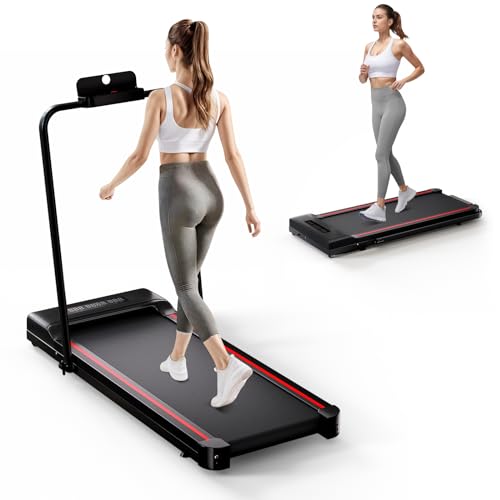
Was: £299 Now: £229 at Amazon
Now on sale, the Sperax walking pad is a top choice on Amazon for good reason. Offering speeds up to 10km/h and with live statistics like distance, speed, and time available on screen, it's ideal for getting started and boosting your fitness at home.
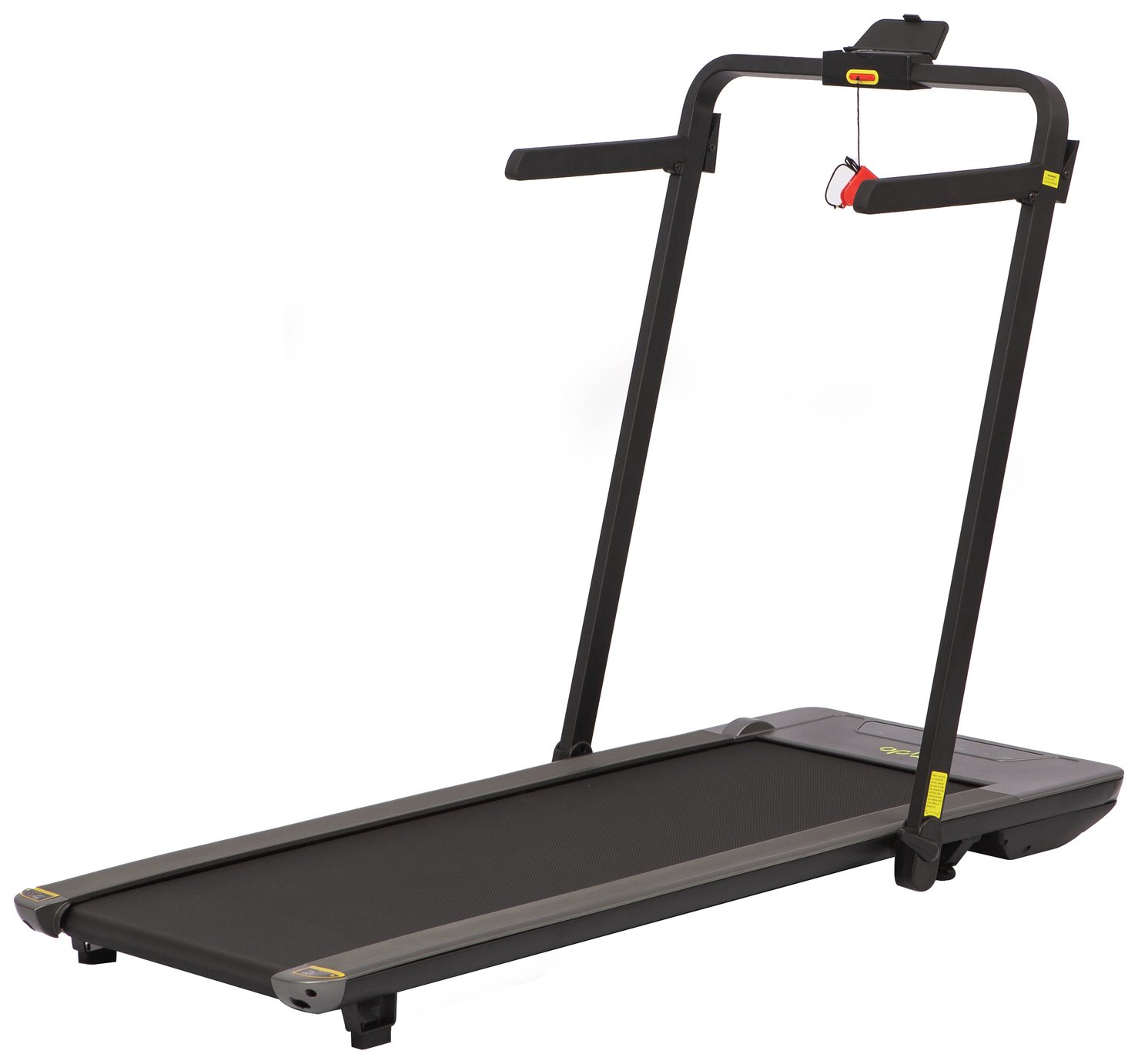
Was: £349 Now £279 at Argos
The Opti Compact Walking Treadmill offers speeds up to 8km/h and additional safety features with two side bars to make walking at home more secure. You'll also get live feedback of your progress (speed, time, distance) and fold the pad away when you're done.
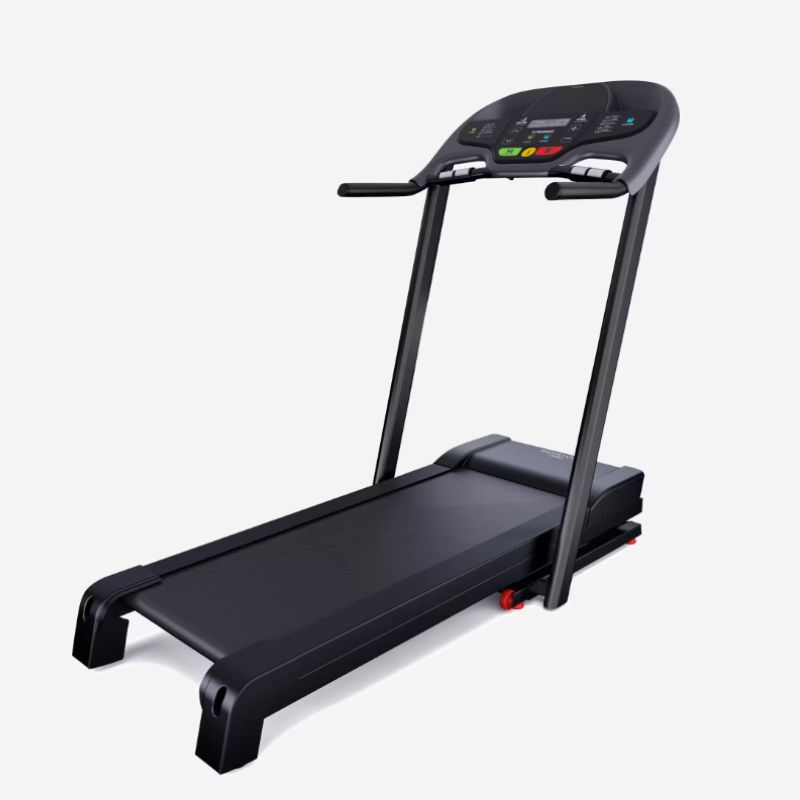
Was £499 Now £419 at Decathlon
If you have a little more room at home, it may be worth upgrading to a treadmill for your walking workout. This one from Decathlon offers 10 programmes with various speed and elevation modes, so you can truly customise your session and challenge your fitness.
Benefits of indoor walking workouts
1. Improved heart health
The benefits of walking outdoors extend to inside the house as well. "Firstly, walking promotes better heart health, which is important as our risk of cardiovascular disease matches that of men after menopause due to the loss of oestrogen," says Emma Simarro, award-winning PT and the founder of Building Body Confidence.
Sign up for the woman&home newsletter
Sign up to our free daily email for the latest royal and entertainment news, interesting opinion, expert advice on styling and beauty trends, and no-nonsense guides to the health and wellness questions you want answered.
"As few as 4,000 steps a day can decrease your risk but the more the better," she says, pointing to research linked to the Medical University of Lodz that suggests even just doing 500 more steps a day can lower the risk of heart disease by 7%.
"It's a great all-over workout and the more you do, the better your cardiovascular fitness and endurance will become."
2. Improves flexibility
While getting into a good stretching routine will undoubtedly be the best way to improve your flexibility, indoor walking workouts can help too as a form of strength training for women.
"Embrace flexible joints and bid farewell to stiffness with the help of walking," says Sacerdoti. "Boost the strength of muscles surrounding your joints as well, reducing the risk of arthritis and ensuring optimal support, and help your body produce synovial fluid through walking. This keeps the joints well-lubricated and injury-free for improved mobility."
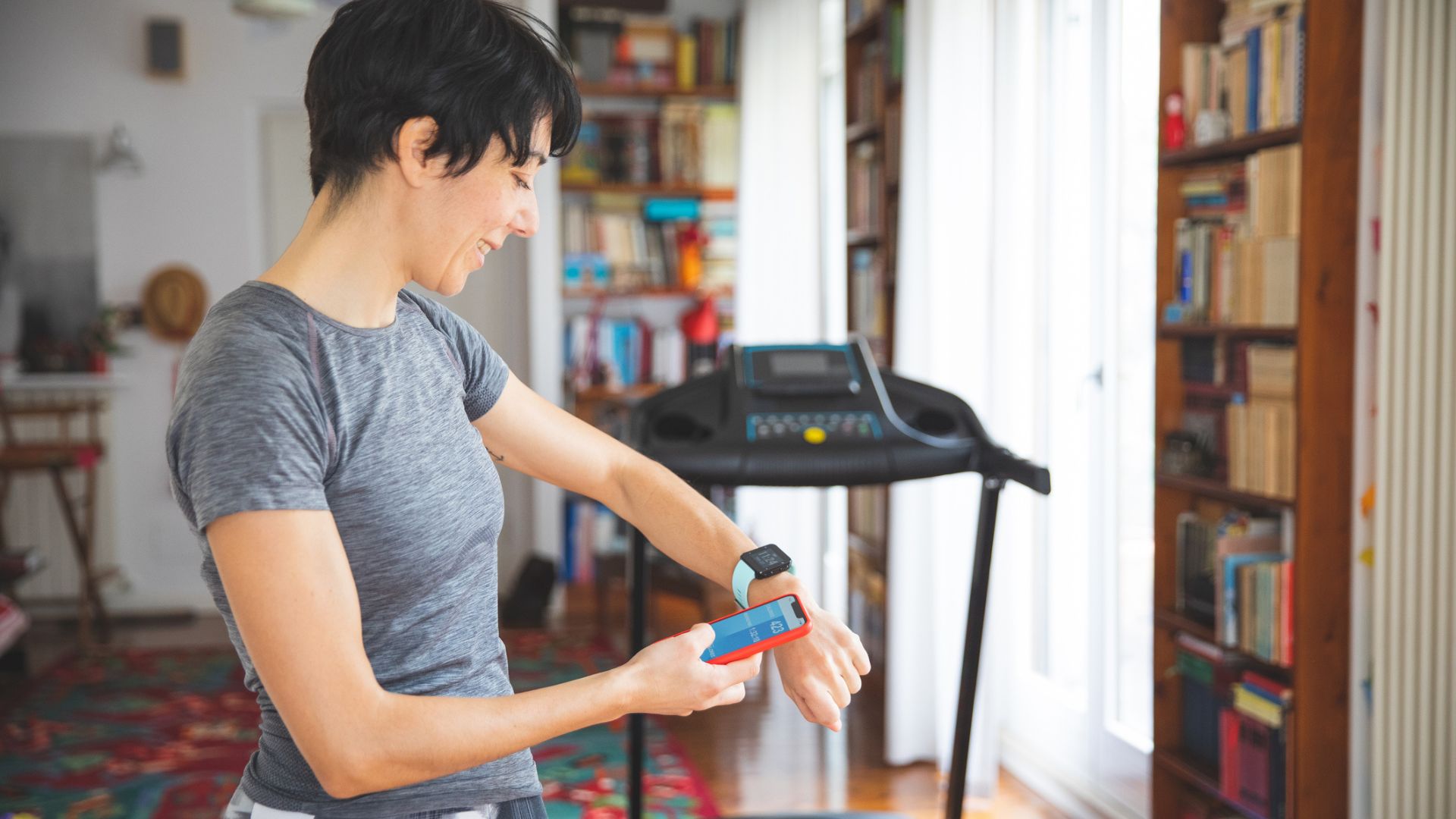
Many of the best fitness trackers now allow you to connect your device to your treadmill for more accurate heart rate monitoring.
3. Helps alleviate menopause symptoms
If you're experiencing symptoms of perimenopause or have been through menopause, exercise is an important lifestyle habit for alleviating discomfort and supporting healthy ageing.
Firstly, Sacerdoti says it can help regulate crucial hormones like cortisol - the stress hormone - which may impact symptoms like hot flushes, night sweats, low mood, and brain fog.
"It's also excellent for safeguarding your muscle mass during menopause when combined with strength training," she says. In menopause, when hormone levels decline, so does muscle and bone mass. This can put us at risk of conditions like osteoporosis.
However, combining indoor walking workouts with one of the many types of strength training is important. "That's what strengthens your bones," says Aroosha Nekonam, a certified personal trainer and strength specialist working with Ultimate Performance. "When you weight train, it helps to increase bone density. You don't get that from walking and you don't get that from Pilates and yoga."
Some traditional, low-impact exercises include squats, lunges, and press-ups. "But you can think outside of the box too. Just walking up and down the stairs is great for the quads. You can perform bicep curls with bags of rocks or stones from your garden or canned food. Try a chair workout," says Nekonam.
"The best thing would be to buy a set of adjustable dumbbells or a rack of good dumbbells with various intensities," she adds. "If you want to get stronger, you need to keep challenging your body and giving it the stimulus to grow. By far the best way to do this is to add a little more weight every time you lift."
Alternatively, wear a weighted vest for walking while doing your workout. However, if you're new to doing combined strength and cardio training, it's best to keep things simple and work your way up to this.
4. Boosts mental health
Never underestimate the power of a good walking workout to boost your mood. While the outdoors has the benefit of fresh air and green space, the weather or your schedule might make this hard to achieve. Indoor walking - especially an early morning walk - can offer the same boost, says Simarro.
"Walking gives us a much-needed break from our busy lives, improves our mood, reduces anxiety and stress, improves sleep and gives us more energy - all things we need in spades! It makes our brains more receptive to neurotransmitters such as serotonin and increases the production of endorphins, boosting our mood and well-being," she says.
Do indoor walking workouts work for weight loss?
Yes, if you want to lose weight, walking can help as it's one of the "most effective ways to increase our energy expenditure [burn calories]," says Simarro. "Fat loss is all about energy balance, so mindful nutrition is essential, but activity also plays an important role. Walking daily is more beneficial than doing a couple of boot camp classes when it comes to energy expenditure! It burns calories but also helps preserve muscle and improves muscular endurance, which is essential as we age and naturally lose muscle mass."
To lose weight, you need to be in a calorie deficit, which means burning more calories than you eat. "And walking burns more calories than you might think! In fact, it is estimated that the average person burns around 500 calories for every 10,000 steps, representing roughly the calorie deficit we need to create each day to lose one pound of fat per week," says Nekonam.
“That doesn’t mean you need to walk 10,000 steps in one go, every day. Short walks spread out across the day are just as effective [also known as exercise snacking]. If you were to take 10, five-minute walks every day, which equates to nearly an hour across your day, you might find yourself burning between 180 and 300 calories."
Walking workout for beginners
Warm-up (1 to 5 minutes)
"Begin with a brisk walk, incorporating arm circles for a dynamic start," says Sacerdoti. This will help to warm up the muscles in your upper and lower body, both of which should be used during walking workouts.
Increase your pace gradually (6 to 16 minutes)
"Increase your pace, focusing on your breath and allowing your arms to guide your momentum," she says.
The key to an effective walking workout is an elevated heart rate. While there's a time and a place for cosy cardio, if you're looking to boost your fitness, you need to push outside of your comfort zone and start power walking.
For example, rating your exertion from one through 10, start your treadmill or walking pad on a two or three for your warm-up. You should be able to maintain a conversation. When the warm-up is done, increase the speed or the incline so you're working at more of a four to six out of ten. Here, you should be breathing heavily and noticing you are more out of breath as the minutes tick by.
In the final few minutes, try to take the intensity up again to a seven or eight out of ten. This should feel more uncomfortable - though you should be able to still speak a sentence.
Reduce your intensity (17 to 22 minutes)
17 minutes into your workout, begin to climb back down the intensity levels.
"Gradually reduce speed to a steady pace, concluding your workout on a calm note," says Sacerdoti.

It's important to stretch and warm up before getting on a walking pad or treadmill for a workout.
30-minute walking workout
Warm-up (3 to 5 minutes)
Start with feet hip-width apart, stand tall and engage your core by drawing your belly button to your spine and lifting your hips up towards your ribs. Your head and neck should be aligned with your spine to avoid leaning forward, says Simarro.
Start walking by driving off your toes onto your back foot and landing on your heel, rolling through the sole of your foot before repeating on the other side.
Swing your arms as you walk on the spot, activating your upper body. The idea is to gradually increase your speed as you go, so by the end of the warm-up, you're walking at a brisk pace, and your heart rate has increased, she says.
Walking speed intervals (10 minutes)
Push yourself during the working intervals and get your heart rate up, then reducing your speed during the rest periods to recover, says Simarro. Walk at a high speed for 30 to 60 seconds before taking the same time to recover at an easy pace.
Doing this for 5 to 10 minutes will challenge your cardiovascular fitness, increase your power and improve your endurance. Put some high-tempo music on and pace it out to the beat, she suggests.
Walking circuit (4 rounds of each exercise)
- High knee marches (40s on, 20s off): Start by lifting one knee as high as you can above your hips whilst driving your opposite arm forward simultaneously, before alternating sides. The higher your knees and more powerful your arm drive, the more demanding this move will be, challenging your core, increasing your heart rate and activating your upper body, says Simarro.
- Side steps (40s on, 20s off): It's important to move in different planes of motion, so a side step is a great exercise to incorporate into a home walking workout. Standing with feet shoulder-width apart, step one foot out to the side and step your other foot to join it, before repeating in the opposite direction. Keep your stride wide and tempo moderate to high to increase your heart rate, she says.
- Side step squats (40s on, 20s off): Now I want you to add a little squat movement to build strength in the quads, hamstrings and glutes. Starting with feet at hip width - take a step out to the side with your right foot (roughly shoulder width) and lower into a squat before standing and returning to your starting position. Alternate sides for the 40 seconds. By adding the squat movement pattern, we are building strength in the lower body, improving hip mobility and core stability, she says.
- Stepbacks (40s on, 20s off): Now to work balance and stability with a step back! Sit back into the bottom in a semi-squat position with your hands on your hips and take a step back, tapping your toe on the floor before returning to your starting position and repeating on the other side.
- Heel 'bum' kicks (40s on, 20s off): Standing with your feet slightly wider than your shoulders, stand tall with your core engaged. Draw one heel up and back up to your bum before repeating on the other side. Transfer your weight between legs, lengthening your quads and hip flexors (which may feel tight from a day at your desk!) and activating the hamstrings.

Grace Walsh is woman&home's Health Channel Editor, working across the areas of fitness, nutrition, sleep, mental health, relationships, and sex. She is also a qualified fitness instructor. In 2025, she will be taking on her third marathon in Brighton, completing her first ultra marathon, and qualifying as a certified personal trainer and nutrition coach.
A digital journalist with over seven years experience as a writer and editor for UK publications, Grace has covered (almost) everything in the world of health and wellbeing with bylines in Cosmopolitan, Red, The i Paper, GoodtoKnow, and more.
-
 Le Creuset has taken the gold standard literally — their 100 year launch features real gold and an iconic designer collaboration
Le Creuset has taken the gold standard literally — their 100 year launch features real gold and an iconic designer collaborationLe Creuset have turned 100 years old and to celebrate they have launched a new colour — Flamme Dorée — as well as a coffee table book with designers Assouline
By Laura Honey Published
-
 This chic, Brazillian perfume brand is our beauty team's secret to smelling expensive and unique
This chic, Brazillian perfume brand is our beauty team's secret to smelling expensive and uniqueFrom salty accords to modern twists on tuberose, there's a Granado perfume for every preference - but these 9 blends have our heart...
By Naomi Jamieson Published